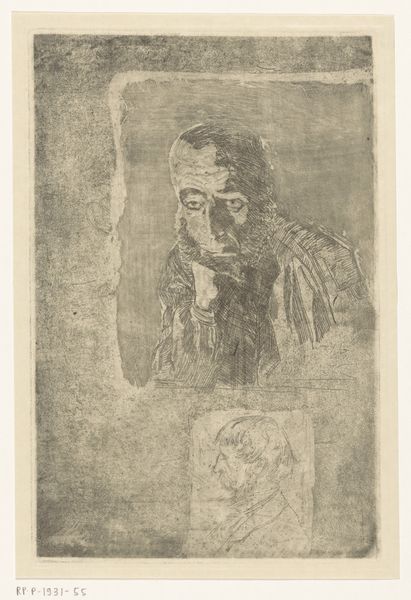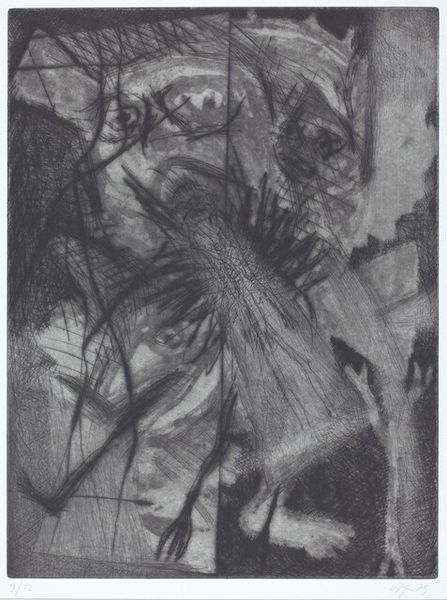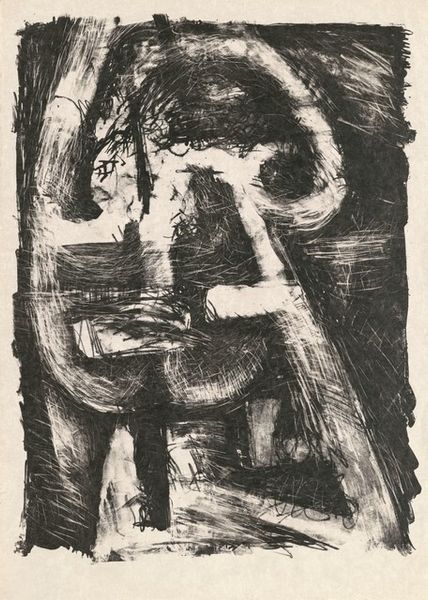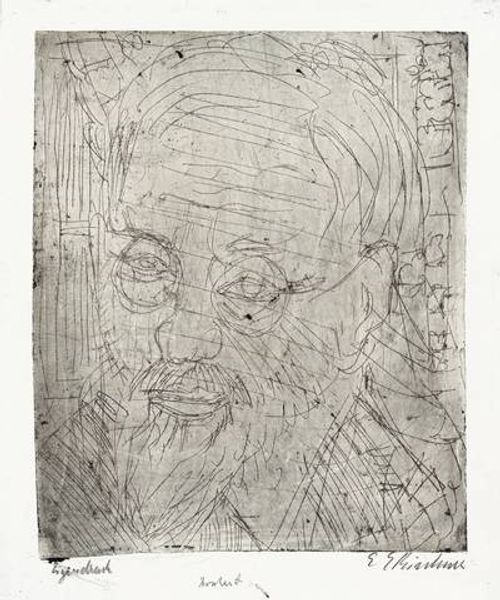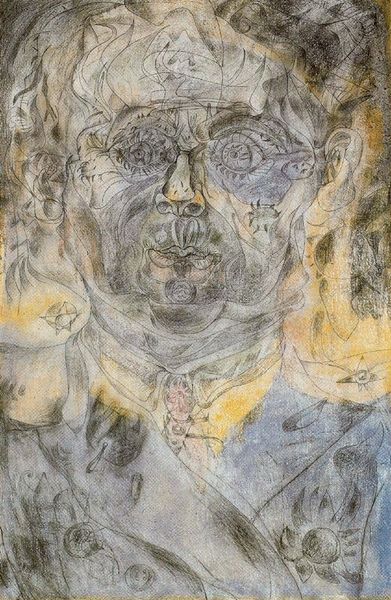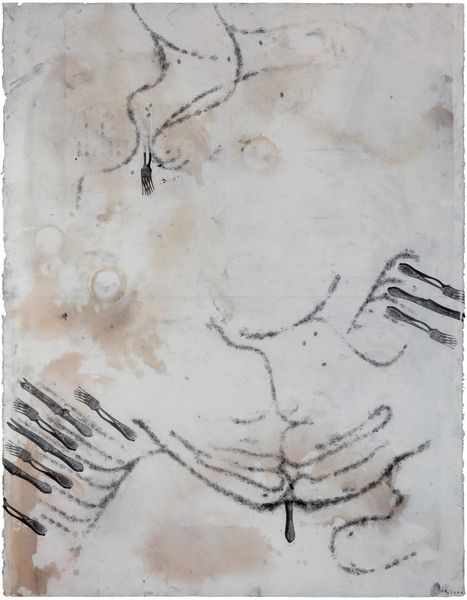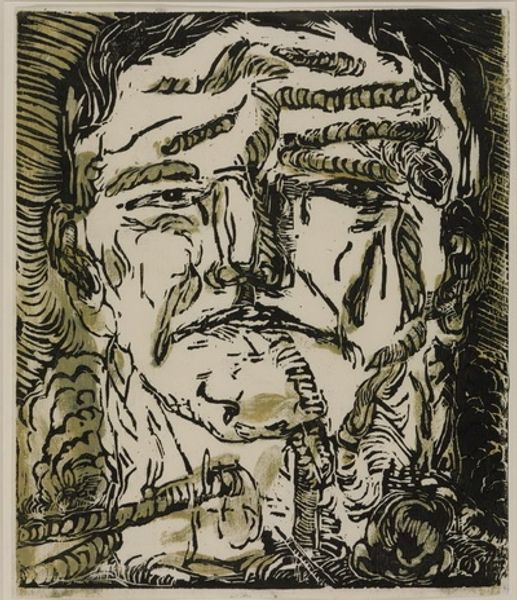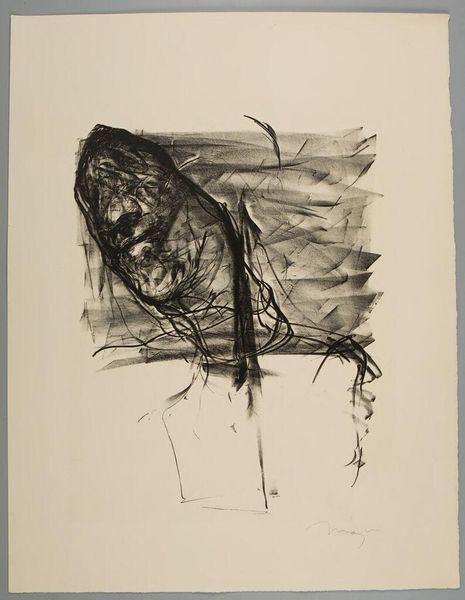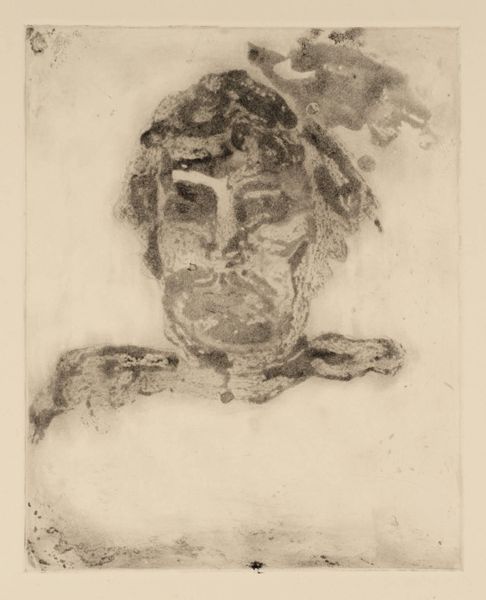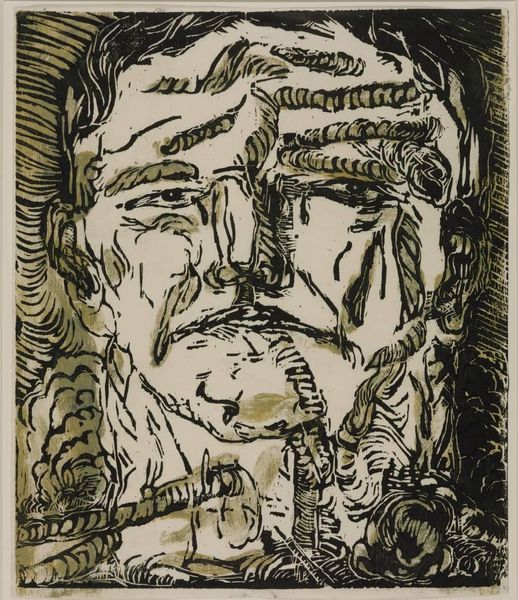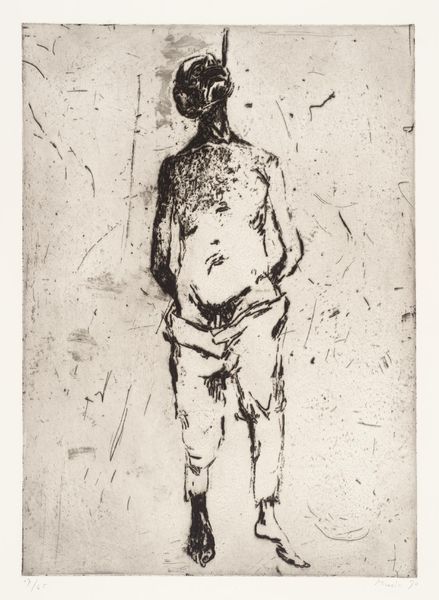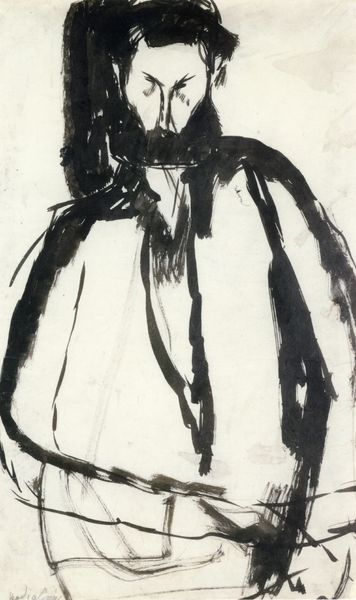
print, etching
#
portrait
# print
#
etching
#
german-expressionism
#
figuration
#
expressionism
Dimensions: plate: 30.4 x 22.3 cm (11 15/16 x 8 3/4 in.) sheet: 62.6 x 44.8 cm (24 5/8 x 17 5/8 in.)
Copyright: National Gallery of Art: CC0 1.0
Curator: Standing before us is Emil Nolde's stark etching from 1918, titled "Der Graf," or "The Count." Made during a period of immense social upheaval, it showcases the raw expressive power printmaking can achieve. What strikes you immediately? Editor: There's an almost violent intensity to it. The way the etching scratches at the figure, especially around the mouth area. The gaze feels trapped and fearful, very disturbing. Curator: The eyes do command attention, don’t they? They're wide, almost haunted. Notice how the heavy lines frame them, contrasting with the relative blurriness of the rest of the face. This contrast draws us to his psychological state. Think about the symbolism: masks, historically, conceal or transform identity, often in ritualistic or theatrical contexts. Could this relate to the socio-political climate of post-World War I Germany? Editor: Absolutely, masks were used to show authority or roles, right? In Nolde’s historical moment, during and after the war, the elite, the 'Counts' perhaps, were increasingly criticized and questioned. Seeing him muzzled, symbolically silenced, feels very pointed. German Expressionists used intense emotion to mirror the social unrest; the muzzling hints at that suppression of the aristocracy or critique on the state in that moment. Curator: Nolde certainly was associated with Expressionism, that movement to externalize inner feelings on the outside world, often quite dramatically. Consider the visual tension between the sharp angles of his hair and the soft ambiguity of the 'mask'. What could this juxtaposition be telling us about the subject’s perceived internal struggle? Perhaps he is someone conflicted about maintaining authority versus true vulnerability? Editor: Possibly. And the artistic establishment was in upheaval during that time as well. Museums and galleries had to respond to war. So that perhaps created an environment that questioned power. I find myself wanting to know *who* "The Count" is supposed to represent. Is it a specific individual, or a broader statement? Curator: Given Nolde’s penchant for universalizing experiences through symbol, it likely extends beyond just one man. More a representation of crumbling authority. Regardless, it’s that lasting power to make you think about society in an emotional way that makes this piece resonant. Editor: Right. It is difficult to ignore how works like this allow us to reflect on today. So much hidden history speaks in those eyes. Curator: Indeed. It leaves a chill you're unlikely to forget.
Comments
No comments
Be the first to comment and join the conversation on the ultimate creative platform.
